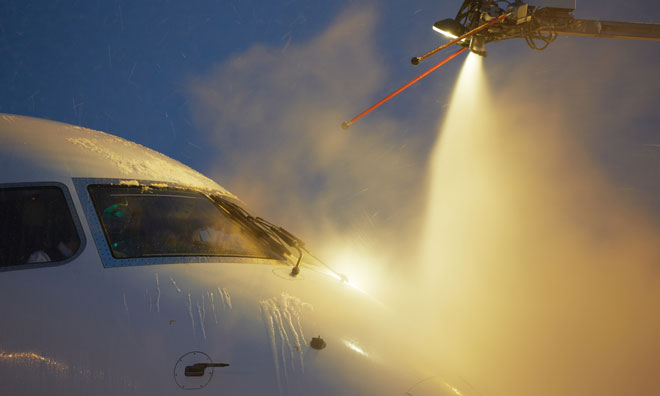US aviation community readies for winter weather
- Like
- Digg
- Del
- Tumblr
- VKontakte
- Buffer
- Love This
- Odnoklassniki
- Meneame
- Blogger
- Amazon
- Yahoo Mail
- Gmail
- AOL
- Newsvine
- HackerNews
- Evernote
- MySpace
- Mail.ru
- Viadeo
- Line
- Comments
- Yummly
- SMS
- Viber
- Telegram
- Subscribe
- Skype
- Facebook Messenger
- Kakao
- LiveJournal
- Yammer
- Edgar
- Fintel
- Mix
- Instapaper
- Copy Link
Posted: 30 September 2016 | International Airport Review | No comments yet
As winter approaches, the U.S. airport and aviation industry will begin using new Takeoff and Landing Performance Assessment (TALPA) methods…


As winter approaches, US airports, airline flight crews, dispatchers, general aviation pilots, air traffic controllers, and manufacturers will begin using new Takeoff and Landing Performance Assessment (TALPA) methods to improve safety at US airports.
The Federal Aviation Administration (FAA) has launched a TALPA website with key information the aviation community needs to know to prepare for the TALPA changes.
FAA guidance, notices, alerts, videos, and frequently asked questions will help the aviation community reduce the risk of runway overrun accidents and incidents due to runway contamination caused by weather and other factors.
The FAA developed the standards based on the work of the TALPA Aviation Rulemaking Committee (ARC). As a result of the committee’s work, the FAA has developed a revised method for airports and air traffic controllers to communicate actual runway conditions to the pilots in terms that directly relate to the way a particular aircraft is expected to perform. The TALPA initiative improves the way the aviation community assesses runway conditions, based on contaminant type and depth, which provides an aircraft operator with effective information to anticipate aeroplane braking performance.
Airport operators will use the new Runway Condition Assessment Matrix (RCAM) to assess runway conditions, and pilots will use it to interpret reported runway conditions. The RCAM is presented in a standardised format, based on aeroplane performance data supplied by aeroplane manufacturers, for each of the stated contaminant types and depths. The RCAM replaces subjective judgements of runway conditions with objective assessments tied directly to contaminant type and depth categories.
The pilot or dispatcher will then consult the aircraft manufacturer data to determine what type of stopping performance to expect from the specific aeroplane they are operating.
The airport operator will assess surfaces, report contaminants that are present, and input the information into the Federal NOTAM System in order to generate the numerical Runway Condition Codes (RwyCC) based on the RCAM. The RwyCCs may vary for each third of the runway if different contaminants are present. However, the same RwyCC may be applied when a uniform coverage of contaminants exists. RwyCCs will replace Mu values, which will no longer be published in the Federal NOTAM System.
Pilot braking action reports will continue to be used to assess braking performance. Beginning October 1, the terminology “Fair” will be replaced by “Medium.” It will no longer be acceptable for an airport to report a NIL (none) braking action condition. NIL conditions on any surface require the closure of that surface. These surfaces will not be opened until the airport operator is satisfied that the NIL braking condition no longer exists.

















